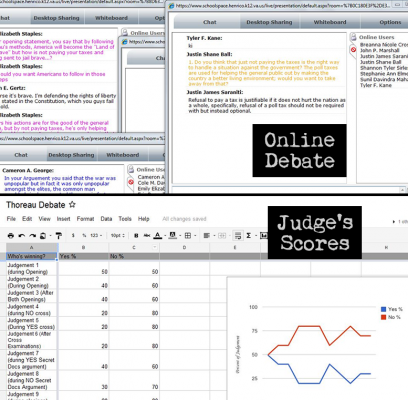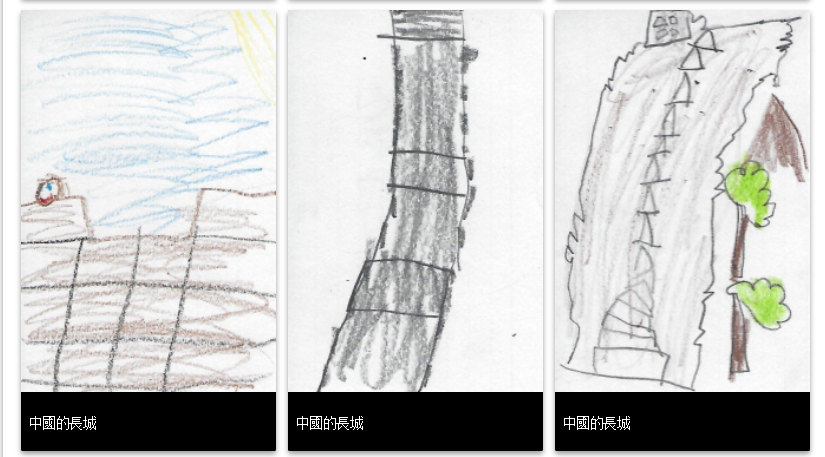Submitted by: John Marshall & Tim Towslee
School: Glen Allen High School
Summary
Students in two classrooms (History and English) chose opposing sides of a debate that would answer the question: “Was Henry David Thoreau justified in his refusal to pay his poll tax in protest of Antebellum American policies?” Both classes learned prior knowledge of the time period and historical events that Thoreau was questioning and read his Civil Disobedience in class. Students formed small groups to prepare an opening statement and probing questions to be used in a debate. These debates took place through the use of Skype and online SchoolSpace chatrooms. Judges were selected to monitor the cross-curricular debate and report a “score” using a Google Doc. Students completed research in their groups and prepared opening arguments and questions. Only one student from each class, however, would be able to deliver the opening address to the other classroom (using Skype) and the Promethean Board. Students had to independently select their best speaker and combine their arguments before the debate began. After these opening statements, students continued the debate in online chatroooms with judges keeping score and reporting out to both classes (via Skype) periodically. The instructors added a “secret document” during the debate to forced students to quickly analyze and incorporate into their arguments. Finally, closing statements were delivered in the chat and the judges gave their final decisions via webcam, prompting celebration of the winning sides of each mini-debate. Instructors assessed the performance of each student by reading the online chat logs and each group’s opening argument.
TIPC Ratings
Ideal/Target: The teachers both facilitated the research and designed the debate for students to synthesize the primary sources provided along with outside research. Students were assessed based on the strength of that research. Students were free to choose the best tool for finding additional sources. The task, a debate related to the merits of non-violent protesting, is both authentic and currently relevant.
Ideal/Target: Teachers enabled meaningful communication regardless of physical setting through the use of electronic resources to deliver this debate. While the debate took place between two classes in the same building, it could have been between groups much farther apart. Students also collaborated within their teams to form their arguments, through the use of email, google docs, or teleconferencing, without urging from their instructors. Students engaged in reflection when the class formed their one opening argument; each group had to decide if their argument or key points should be included in the debate. Some felt theirs was very strong, others did not. During the debate the judges reflected by providing instant feedback. The teachers were able to formatively assess both the group performance (based on the judges scores and the opening statement) and the role of the individual (using the chat-room log to see to what extent each person contributed.)
Ideal/Target: The debate was designed to have students engage in critical thinking as they analyze and interpret primary sources and solve the problem of how to include them in their arguments. Students had to address which aspect of the debate questions to focus on, thus creating their own purposeful questions. (example: should we attack his motives for protest or his methods as being ineffective?) During the debate, the teachers facilitated their thinking, celebrated their successes, and encourage risk taking. The introduction of the “secret document” during the debate forced the groups to engage in time-sensitive critical thinking. Students were constantly reflecting on their argument through the role of the judge. If the judge gave a point to a member of the opposing team, students had to instantly analyze their argument and attack it from a new angle.
Approaching: Students are creating meaningful arguments in the form of their opening statements through analysis of primary sources to create an original argument. They were called upon to use argumentative language and to be prepared to deliver a convincing speech.
Download Files
- Lesson Plan
- Chat Room Log
- Google Doc Judge’s Spreadsheet
- Student Opening Statement Example






